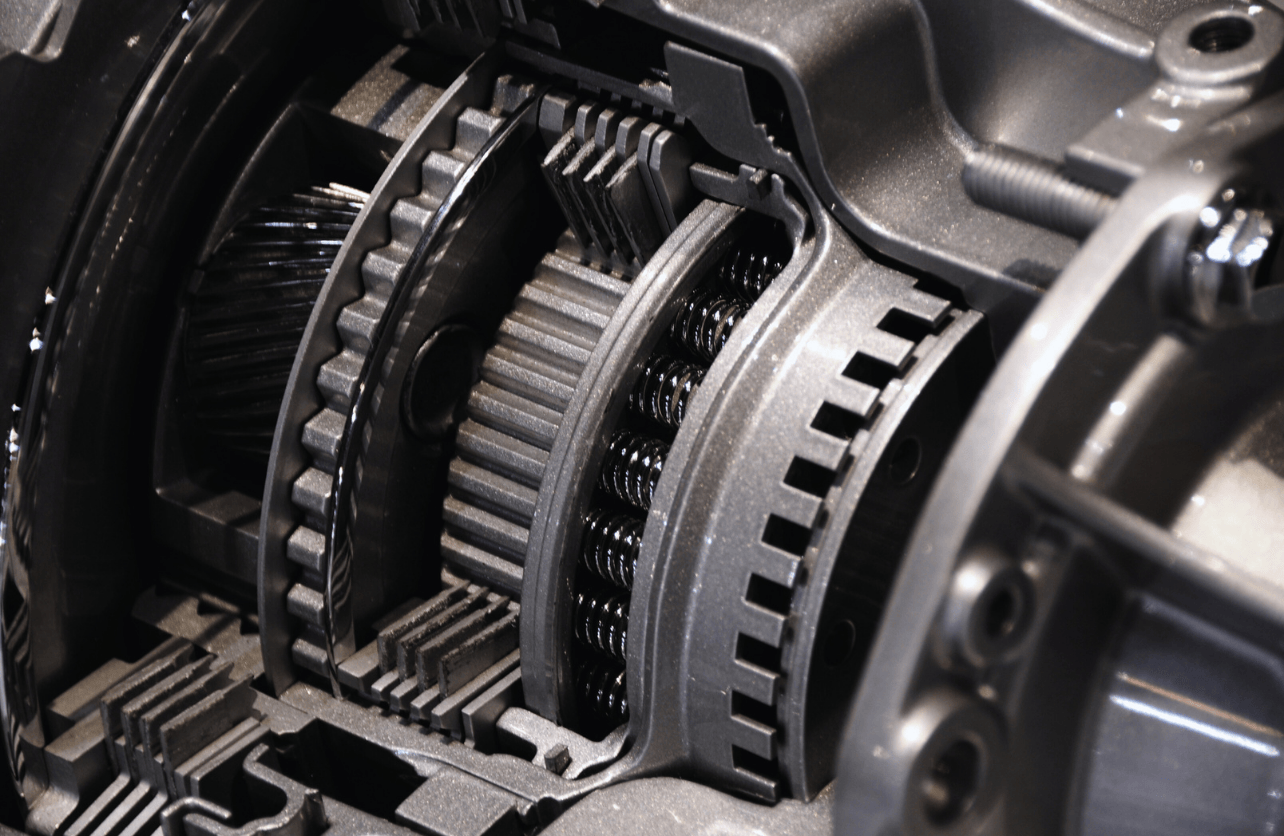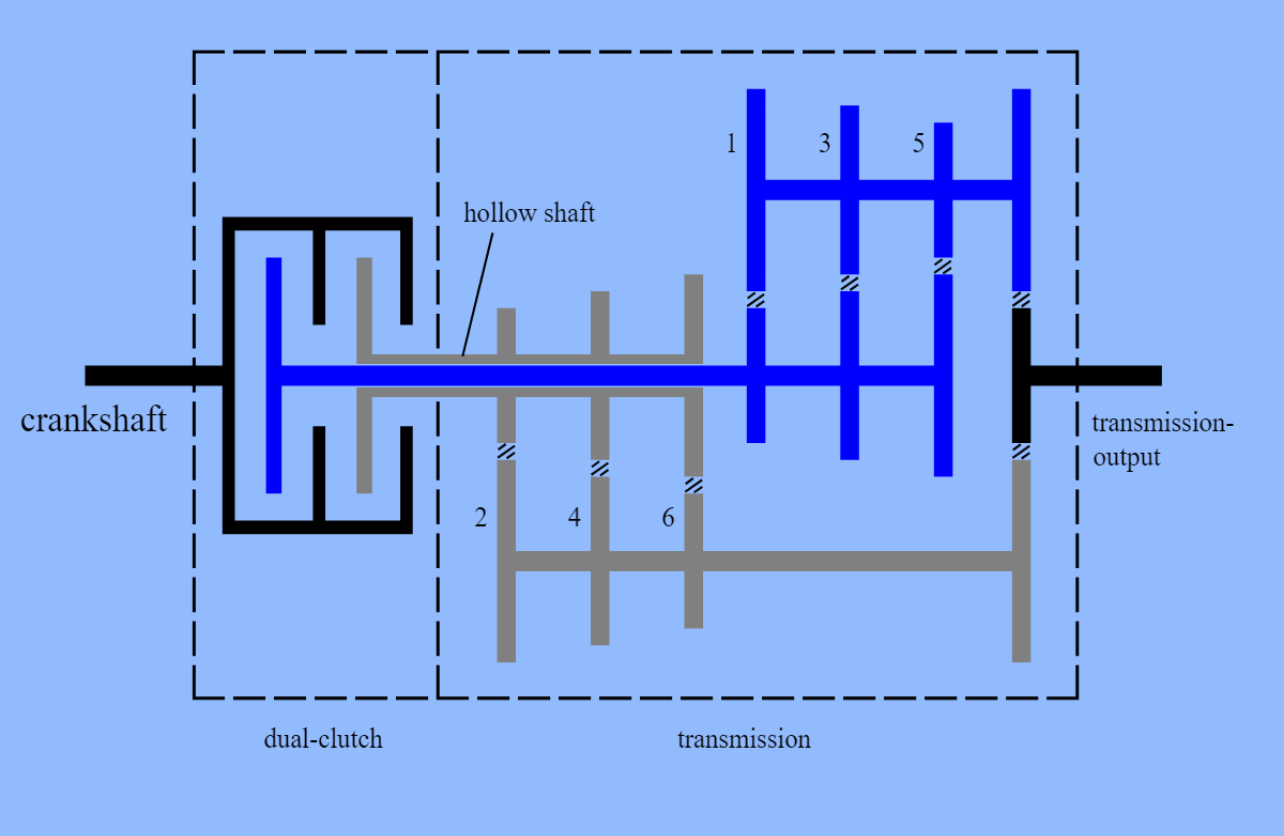What Is a Dual-Clutch Transmission (DCT)? Everything You Need to Know

When shopping for a car, you might come across the term Dual-Clutch Transmission (DCT)—a system designed to enhance the driving experience with smooth, rapid gear changes and improved efficiency. But what exactly is a DCT, and how does it differ from traditional transmissions? This guide breaks down the technology, benefits, and considerations to help you understand this advanced transmission system.
What Is a DCT?

A Dual-Clutch Transmission, or DCT, is a type of automatic transmission that uses two separate clutches to manage gear shifts. Unlike a traditional manual transmission, where the driver operates a single clutch to change gears, a DCT automates the process using two clutches:
- One clutch controls the odd-numbered gears (1st, 3rd, 5th, etc.).
- The other controls the even-numbered gears (2nd, 4th, 6th, etc.).
This setup allows the transmission to pre-select the next gear while the current gear is engaged, resulting in lightning-fast shifts without any interruption in power delivery.
How Does a DCT Work?
The DCT operates using a computer-controlled system that seamlessly shifts gears by alternating between the two clutches. Here’s how it works:
- Pre-Selection:
While one gear is engaged, the second clutch pre-selects the next gear. For example, when driving in 1st gear, the 2nd gear is already prepared for engagement. - Gear Transition:
When it’s time to shift, the system disengages the first clutch and engages the second clutch almost simultaneously, enabling a near-instantaneous transition to the next gear. - Continuous Power Delivery:
Because the next gear is pre-selected, there’s no lag or interruption in power, ensuring smooth acceleration and an enhanced driving experience.
Advantages of Dual-Clutch Transmissions
DCTs are favored for their performance and efficiency. Here are the key benefits:
Faster Gear Shifts
The ability to pre-select gears makes DCTs significantly quicker than traditional automatic or manual transmissions. This rapid shifting is particularly beneficial in performance-oriented vehicles, where seamless acceleration is critical.
Improved Fuel Efficiency
DCTs reduce energy loss during gear changes, often resulting in better fuel economy compared to conventional automatic transmissions.
Enhanced Driving Dynamics
DCTs offer a smooth and engaging driving experience. Many vehicles equipped with DCTs also feature paddle shifters, allowing drivers to manually control gear changes for a sportier feel.
Versatility
DCTs are designed for a wide range of vehicles, from compact cars to high-performance sports cars. This flexibility makes them suitable for both daily commuting and spirited driving.
Potential Drawbacks
While DCTs offer numerous advantages, there are a few considerations:
- Low-Speed Behavior:
At low speeds or in stop-and-go traffic, some drivers may notice a slightly jerky or hesitant feel, as the system transitions between clutches. - Higher Maintenance Costs:
Due to their complexity, DCTs can be more expensive to maintain and repair compared to simpler transmission systems. - Learning Curve:
For drivers accustomed to traditional automatic transmissions, adjusting to the unique characteristics of a DCT may take some time.
DCT vs. Other Transmissions
DCT vs. Automatic Transmission
- DCT: Offers quicker shifts and better fuel efficiency.
- Automatic Transmission: Provides smoother performance at low speeds but with slower gear changes.
DCT vs. Manual Transmission
- DCT: Automates gear changes, making it easier for the driver while retaining some of the performance benefits of a manual transmission.
- Manual Transmission: Requires the driver to operate the clutch and shift gears manually, offering full control but at the cost of convenience.
Applications of DCTs
Dual-Clutch Transmissions are commonly found in:
- Performance Cars: Brands like Porsche, Audi, and BMW use DCTs in their sports models to enhance acceleration and responsiveness.
- Mainstream Vehicles: Many manufacturers incorporate DCTs in everyday cars to improve efficiency and offer a more engaging driving experience.
- Motorcycles: DCTs are also used in motorcycles, providing riders with smoother gear changes and enhanced control.
Maintaining a DCT
To ensure optimal performance and longevity, follow these maintenance tips:
- Regular Servicing:
Check your vehicle’s maintenance schedule for transmission fluid changes and inspections. - Avoid Overheating:
Prolonged use in heavy traffic or steep inclines can overheat the system. Give the transmission time to cool if necessary. - Smooth Driving:
Avoid abrupt stops and aggressive acceleration to minimize wear and tear on the clutches.
Is a DCT Right for You?
Whether a DCT is the right choice depends on your driving preferences and needs:
- Choose a DCT If:
- You want quick, seamless gear changes.
- Fuel efficiency is a priority.
- You enjoy a sportier driving experience.
- Consider Alternatives If:
- You frequently drive in stop-and-go traffic.
- You prefer a simpler, lower-maintenance transmission.
Final Thoughts
A Dual-Clutch Transmission combines the best aspects of manual and automatic systems, offering fast, smooth, and efficient gear shifts. While it may not be the perfect fit for every driver, its benefits make it an appealing choice for those who value performance and efficiency.
Whether you’re shopping for a new car or just curious about automotive technology, understanding how a DCT works can help you make informed decisions and appreciate the engineering behind this advanced transmission system.